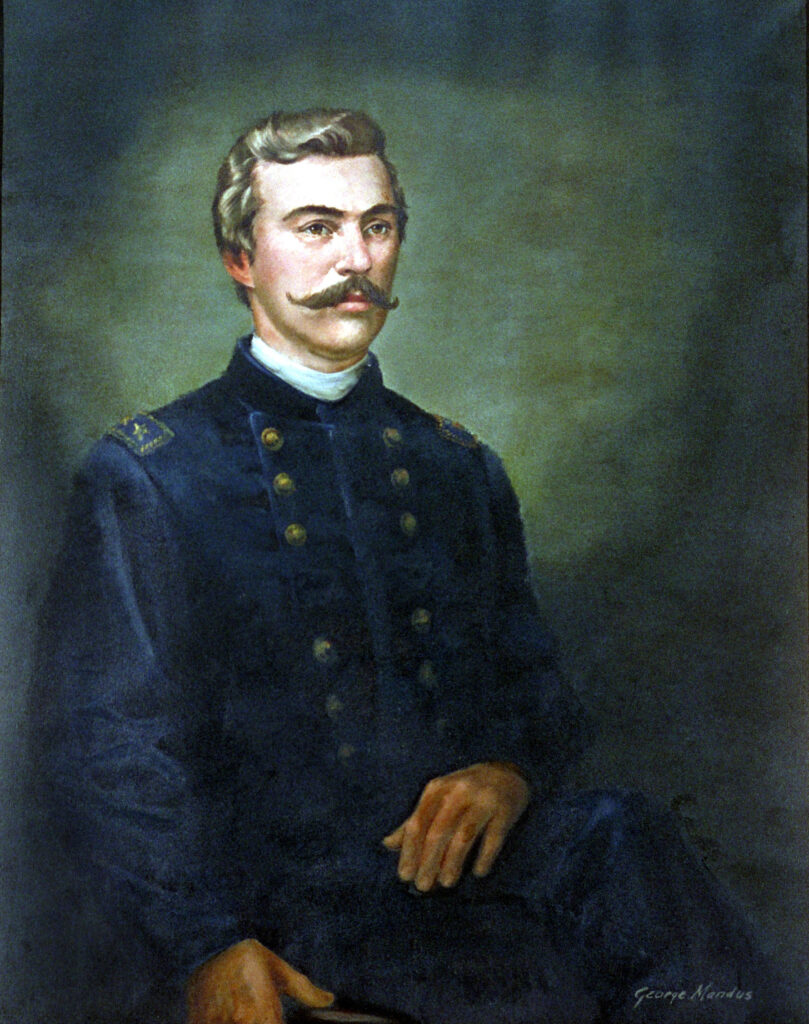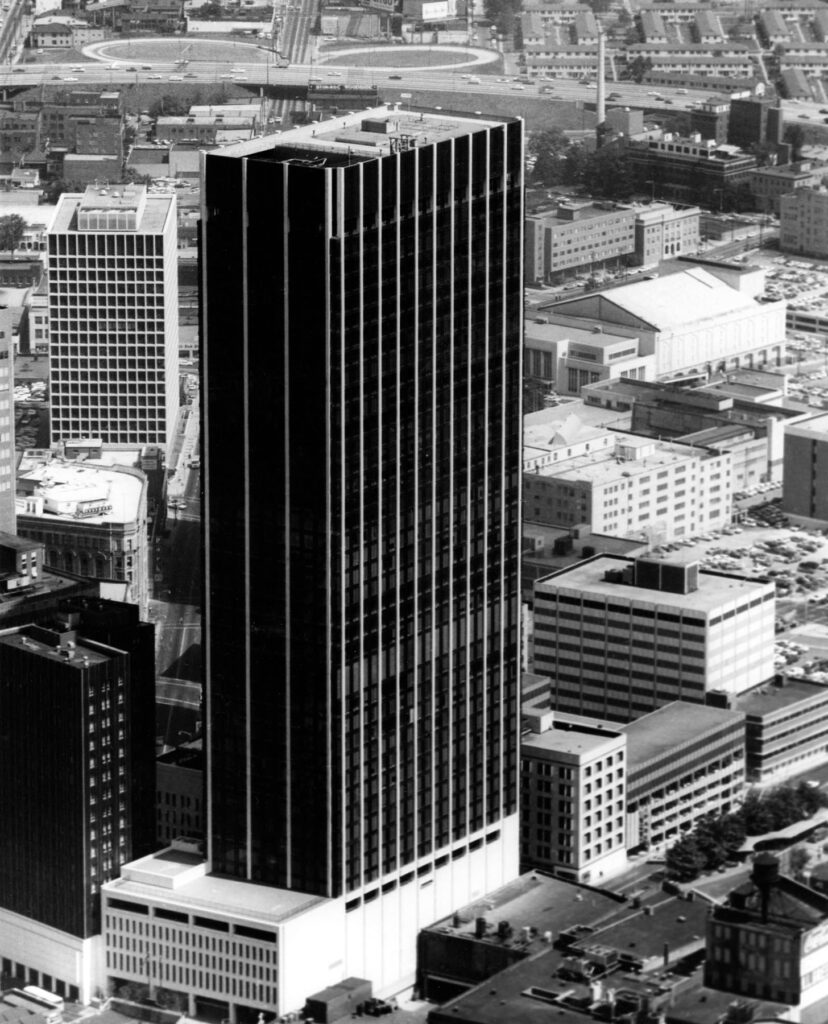The Chattahoochee Brick Company was among the largest and most notorious employers of convict labor in Georgia. Under the terms of the convict lease system, Chattahoochee Brick forced thousands of Black Georgians to labor under conditions that have been described as industrial slavery.
Built on the red clay banks of the Chattahoochee River in northwest Atlanta, the Chattahoochee Brick Company opened in 1878. James W. English founded the company with William Lowe and became majority shareholder in 1886. English served as a Confederate officer during the Civil War (1861-65), and later established himself as a leading businessperson, police commissioner, and mayor in Atlanta. Though he was not a slaveowner before the war, English viewed convicts as a valuable source of inexpensive labor and came to reap enormous profit from the convict lease system.

The Thirteenth Amendment to the U.S. Constitution officially ended slavery in 1865, “except as a punishment for crime whereof the party shall have been duly convicted.” Black Americans, therefore, could be legally subjected to conditions akin to enslavement after criminal conviction, and during Reconstruction southern states quickly passed Black Codes and other laws aimed at curtailing the freedoms of formerly enslaved people. Legal codes in the late nineteenth century often criminalized minor offenses and disproportionately targeted African Americans. Vagrancy laws, for example, effectively criminalized joblessness, homelessness, or traveling. Other southern laws criminalized changing employers without permission, loud conversation, and interracial sex.
In December 1866 the Georgia General Assembly passed legislation permitting the leasing of convicts to local businesses. The first contract, however, was not issued until May 1868, when Provisional Governor Thomas Ruger leased 100 Black convicts to the Georgia and Alabama Railroad. By the late 1880s, convicts were forced to labor in myriad industries across the state, including railroads, coal mines, industrial farms, saw mills, and brickyards. By the early 1890s, approximately 150 leased convicts—the vast majority of whom were Black men and women—worked alongside a small free labor force at the Chattahoochee Brick Company.

Producing over 200,000 bricks a day, the factory was the largest brick producer in the state, and its bricks were used to rebuild urban Atlanta during the post-Civil War building boom. Other companies in the state and region, struggling to compete with the low cost of convict labor production, soon followed suit. By 1886 about thirty percent of Georgia brickmakers relied on convict labor, and the U.S. Commissioner of Labor noted its deleterious effects on wages, observing that “the brick-making industry around Atlanta, formerly employing about 600 hands, has been broken up almost entirely by convict-labor competition.”
Living and working conditions at the Chattahoochee Brick Company were brutal. Leased convicts lived in substandard housing at work sites and received little food, some of it rancid. Brickmaking was an arduous process that had changed little since the seventeenth century. According to author Douglas A. Blackmon, gangs of prisoners worked from sun-up to sundown, gathering wet clay from the riverbank and transporting the raw material to the factory. After forcing the clay into rectangular molds to dry, the heavy bricks were carried across the plant and deposited into hot, coal-fire kilns where they would bake for a full week. The finished bricks were then removed from the heat, placed onto pallets, transported across company property, and loaded onto railroad cars for sale and distribution. Workers were meanwhile beaten or whipped for even slight infractions—one guard reported between two hundred and three hundred whippings a month—and a great many were reported to have died on the premises.

English wrung enormous profit from convict labor—profit that in 1896 allowed him to establish the Atlanta Fourth National Bank. In 1929 Fourth National would merge with another Atlanta-area financial institution to form the First National Bank of Atlanta, then the largest American bank south of Philadelphia. English was not the only prominent Georgian to profit from the labor of Black convicts. Joseph E. Brown, a former governor and U.S. senator, employed convict labor in his mines and iron furnaces near Lookout Mountain. Though a legislative committee found evidence of “great cruelty” at the mines, they were nevertheless sold after Brown’s death to Atlanta developer Joel Hurt, who continued the practice.
Sordid stories of widespread abuse and maltreatment eventually prompted a legislative inquiry into convict leasing in Georgia. Public meetings across the state condemned the practice, leading progressive governor Hoke Smith to recommend its abolition. In September 1908, the Georgia legislature officially abolished the convict leasing system, leaving the Chattahoochee Brick Company ninety days to transition to a free labor force. English feared a substantial loss in profit due to the change and proposed to “manufacture all of the brick we can possibly produce between now and the expiration of the present convict lease…and by that means accumulate as large a reserve [of brick] as possible.” From January to March 1909, the Chattahoochee Brick Company produced 7.8 million bricks—almost eighteen percent more than average—under merciless working conditions. As expected, production lagged following the transition to free labor, falling by half the following year.

The legislation that abolished the convict lease system also provided for its replacement, the chain gang. Under the new system, Georgia’s prisoners were set to work building and maintaining the state’s roadways. Conceived as a more humane alternative to the convict lease system, the chain gang nevertheless became a subject of concern for reformers. As evidence of mistreatment mounted in the 1930s, state leaders came under increasing pressure to abandon the practice, which was finally abolished by Governor Ellis Arnall in 1943.
Though several brickyards and mines folded when cut off from cheap convict labor, the Chattahoochee Brick Company continued operations until 1972. In 1978, the company was bought by the General Shale Products Corporation, which administered the plant until 2010 and demolished its buildings in 2011.
In 2008 journalist Douglas A. Blackmon published Slavery by Another Name: The Re-Enslavement of Black People in America from the Civil War to World War II, which examined the use of Black convict labor at the Chattahoochee Brick Company and the origins of “industrial slavery.” The book was a New York Times Best Seller and received the Pulitzer Prize for nonfiction in 2009. In 2012 it was adapted into a ninety-minute documentary, also called Slavery by Another Name, which, together with the book, contributed to renewed interest in the seventy-seven-acre land that formerly housed the brickworks.
For nearly a decade the city and local interest groups vied with businesses for ownership over the land—the former arguing on behalf of the locations’ historical significance. Finally, in 2022, as part of an ongoing effort to preserve and restore a fifty-three-mile stretch of land along the Chattahoochee River, the Conservation Fund purchased the site on behalf of the City of Atlanta, which then gained rights to the property in August of that year. Following preservation and rehabilitation efforts, the land will serve as a memorial to those who labored at the brickworks under the convict leasing system.











